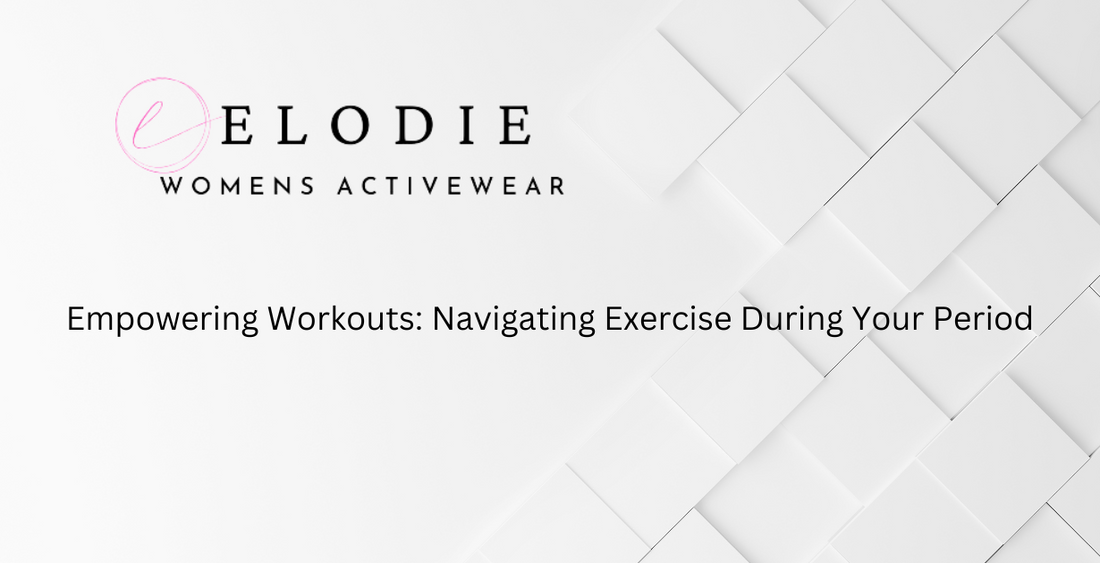
Empowering Workouts: Navigating Exercise During Your Period
Share
For many women, working out during their period can feel like a daunting task. Yet, maintaining an active lifestyle during this time is not only possible but beneficial. From alleviating cramps to boosting mood, exercise can play a crucial role in your menstrual health. Here’s a comprehensive guide to navigating workouts during your period, with tips on how to stay comfortable and motivated.
1. Listen to Your Body
The first rule of exercising during your period is to listen to your body. Everyone experiences menstrual symptoms differently, so it’s important to gauge how you feel each day. If you’re feeling up to it, moderate exercise can be beneficial. If you’re experiencing severe cramps or fatigue, it’s okay to take it easy or adjust your routine.
Key Points:
- Adjust Intensity: Opt for lighter activities if you’re feeling fatigued.
- Rest When Needed: Allow yourself rest days if needed.
2. Choose the Right Workout
Certain types of exercise can be particularly beneficial during your period. Low-impact activities and gentle exercises can help alleviate menstrual discomfort and boost your mood.
Effective Workouts:
- Walking or Light Jogging: Helps increase circulation and alleviate cramps.
- Yoga: Relieves tension and promotes relaxation. Poses like Child’s Pose and Cat-Cow can be particularly soothing.
- Swimming: Offers a full-body workout and is gentle on the body, though you may need to use tampons or menstrual cups for comfort and confidence.
3. Stay Hydrated and Nourished
Hydration and nutrition are key to feeling your best during your period. Drinking plenty of water and eating a balanced diet can help manage bloating and energy levels.
Hydration Tips:
- Drink Water: Helps reduce bloating and maintains energy.
- Consume Electrolytes: Foods like bananas and leafy greens can help balance electrolytes.
Nutritional Tips:
- Eat Iron-Rich Foods: To combat fatigue, include foods like spinach, beans, and lean meats.
- Avoid Excessive Caffeine and Sugar: These can exacerbate mood swings and bloating.
4. Wear the Right Gear
Comfortable workout attire and appropriate menstrual products can make a big difference in how you feel during exercise.
Recommended Gear:
- Breathable Clothing: Choose moisture-wicking fabrics that keep you dry and comfortable.
- Supportive Sports Bras: Provide extra comfort and support.
- Menstrual Products: Tampons, menstrual cups, or period underwear can help you feel secure and confident during workouts.
5. Manage Symptoms
Exercise can help alleviate common menstrual symptoms like cramps, bloating, and mood swings. Incorporating relaxation techniques and mindfulness into your routine can further enhance your comfort.
Symptom Management:
- Stretching: Gentle stretches can ease muscle tension and cramps.
- Deep Breathing: Helps manage stress and promote relaxation.
6. Embrace Flexibility
Remember that your menstrual cycle is a natural part of life, and it’s okay to adapt your workout routine based on how you feel. Embrace flexibility and be kind to yourself during this time.
Flexibility Tips:
- Modify Workouts: Adjust intensity or type of exercise as needed.
- Prioritize Self-Care: Focus on activities that make you feel good and support your overall well-being.
7. Consult a Professional
If you experience severe menstrual symptoms or have specific concerns, consulting a healthcare provider can provide personalized advice and ensure your exercise routine is aligned with your health needs.
Conclusion
Working out during your period doesn’t have to be a challenge. By listening to your body, choosing appropriate exercises, staying hydrated, and wearing the right gear, you can maintain an active lifestyle and support your menstrual health. Remember, every woman’s experience is unique, so find what works best for you and embrace the benefits of exercise throughout your cycle.
Empower yourself with the right tools and knowledge to stay active and feel great, no matter the time of the month. Happy sweating!
